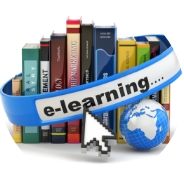Custom E-learning Development Company in USA

We believe in delivering custom e learning development content for each client.
As a client-centric company, our focus is based on the client’s target audience and how we can cater to their needs. A deep dive into the client’s audience helps us determine the action and layout of the course. We do not shy away from offering our suggestions as we treat each project as our own.
At Stylus, we deliver impactful courses based on globally accepted standards, such as Microsoft’s Manual of Style for Technical Publications (MSTP) and Chicago Manual of Style. We also personalize and customize courses to suit your needs. We also provide tailor-made courses based on your processes, needs and target audience and are well known for our custom e-learning development.
Right from discussing your list of subjects to finalizing the course contents, we develop the modules with a team of experienced instructional designers, visualizers, integrators, and developers. Our innovative team is always on the hunt for new and exciting concepts that make learning fun. We offer custom elearning development for various clients as each one wants to be different from the other. Our custom elearning development courses include features, such as infographics, interactivities, games, Show-MEs, assessments and simulations.
We provide Custom elearning development processes across four levels. While we have outlined the standard elements of each level, these can be customized as per requirements. For more details on the kind of interactivities and additional features that we can provide, do connect with us for more details.
If you need to develop training materials for your organization, let Stylus be your guiding force.
